If you’re feeling overwhelmed by figuring out which of your ads lead to conversions, you’re not alone. Meta Ads Attribution is a powerful tool, but it’s not always intuitive. In this post, our Meta expert, Pamela Angeles, simplifies Meta Attribution, helping you understand how to set it up, interpret the data, and use it to drive better results for your campaigns.
Let's break down Meta Ads Attribution in this order:
Attribution Settings
In simple terms, attribution refers to the timeframe during which Meta takes credit for a conversion. As a default, campaign attribution settings will be 7-day click-through and 1-day view-through, meaning that Meta will make sure to show ads to people most likely to convert within 7 days of clicking or 1 day of viewing the ad. Also, the campaign results will be shown in Ads Manager depending on this attribution window.
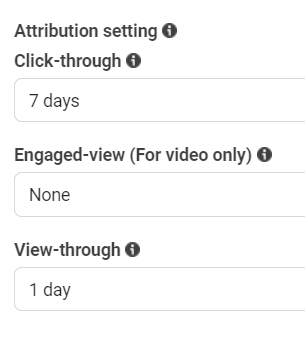
However, attribution settings can be configured as click-through 1-day or 7-day, and view-through or engaged-view 1-day. Now, let's explain each of these terms and settings.
Click-through
A click-through happens when a user converts (makes a purchase) after clicking on your ad on any of Meta's placements. This can be set as 7-day-click or 1-day-click. The main difference is the duration within which Meta claims credit for the conversion. For example:
7-day-click
Paul is scrolling through Instagram and sees an ad for Formula1 Fan T-Shirts. He clicks on the ad and explores the website without making a purchase. Three days later, after Paul receives his paycheck, he returns to the website to buy the T-shirt he liked. Meta will take credit for Paul’s purchase because it occurred within the 7-day-click window. If the campaign was set for 1-day-click, Meta wouldn’t take credit for Paul’s purchase. Similarly, if Paul had bought the T-shirt nine days later, Meta wouldn’t take credit for the purchase.
1-day-click
Maria is playing a game on her cellphone when she sees an ad for Fantastic Makeup. She visits the website and makes a purchase. Meta will take credit for that purchase because it occurred within the 1-day-click window.
View-through
View-through refers to when the user converts (makes a purchase) after viewing an ad. Engaged-view is a relatively new setting that Meta launched for video ads, which considers whether the user watched a minimum of 10 seconds of the video or 97% of the video if it is shorter than 10 seconds. Both can only be set at 1-day-view, meaning that only purchases that occur within one day of viewing the video or seeing the ad will be attributed to Meta.
Combinations
Combinations can be made between 7-day-click + 1-day-view or 1-day-click + 1-day-view, or view-through can be omitted altogether, opting only for 7-day-click.
Meta also offers columns where you can compare attribution settings, and in this option, you can see 28-day-click as well.
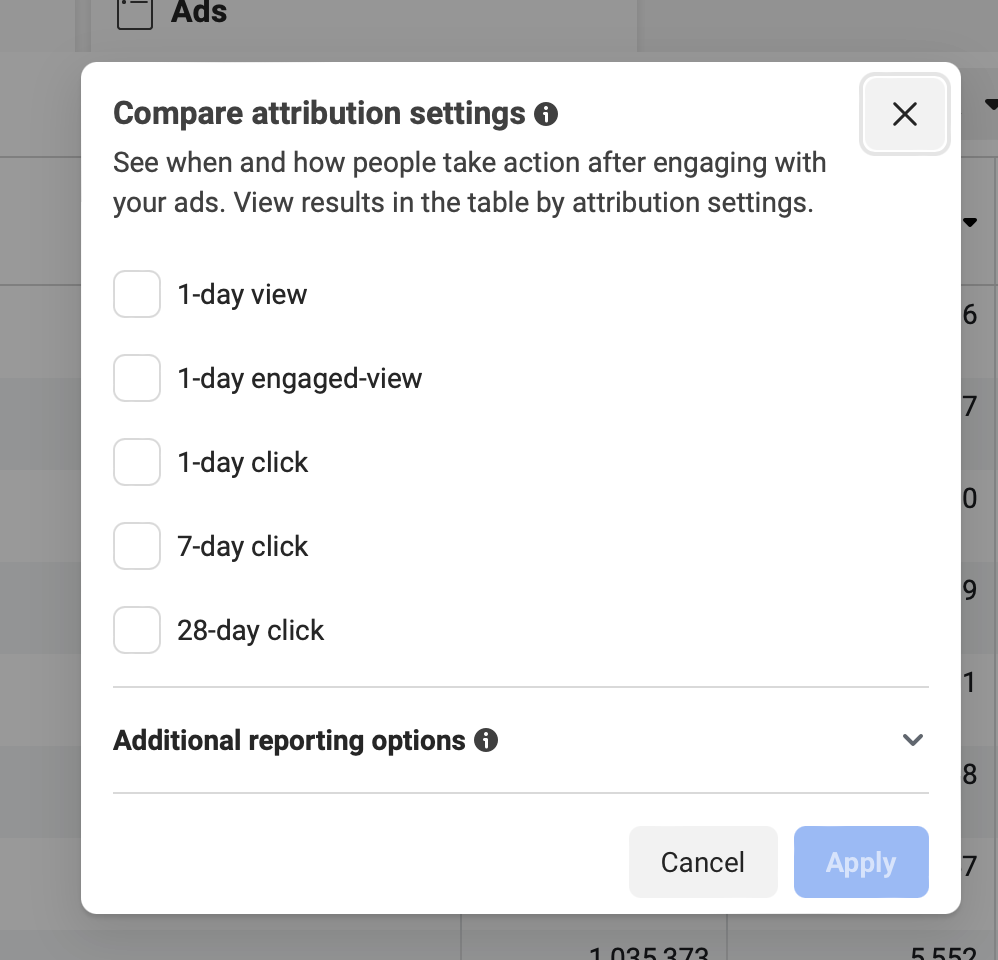
This is an example of Meta campaign's results, when compare attribution settings is selected:
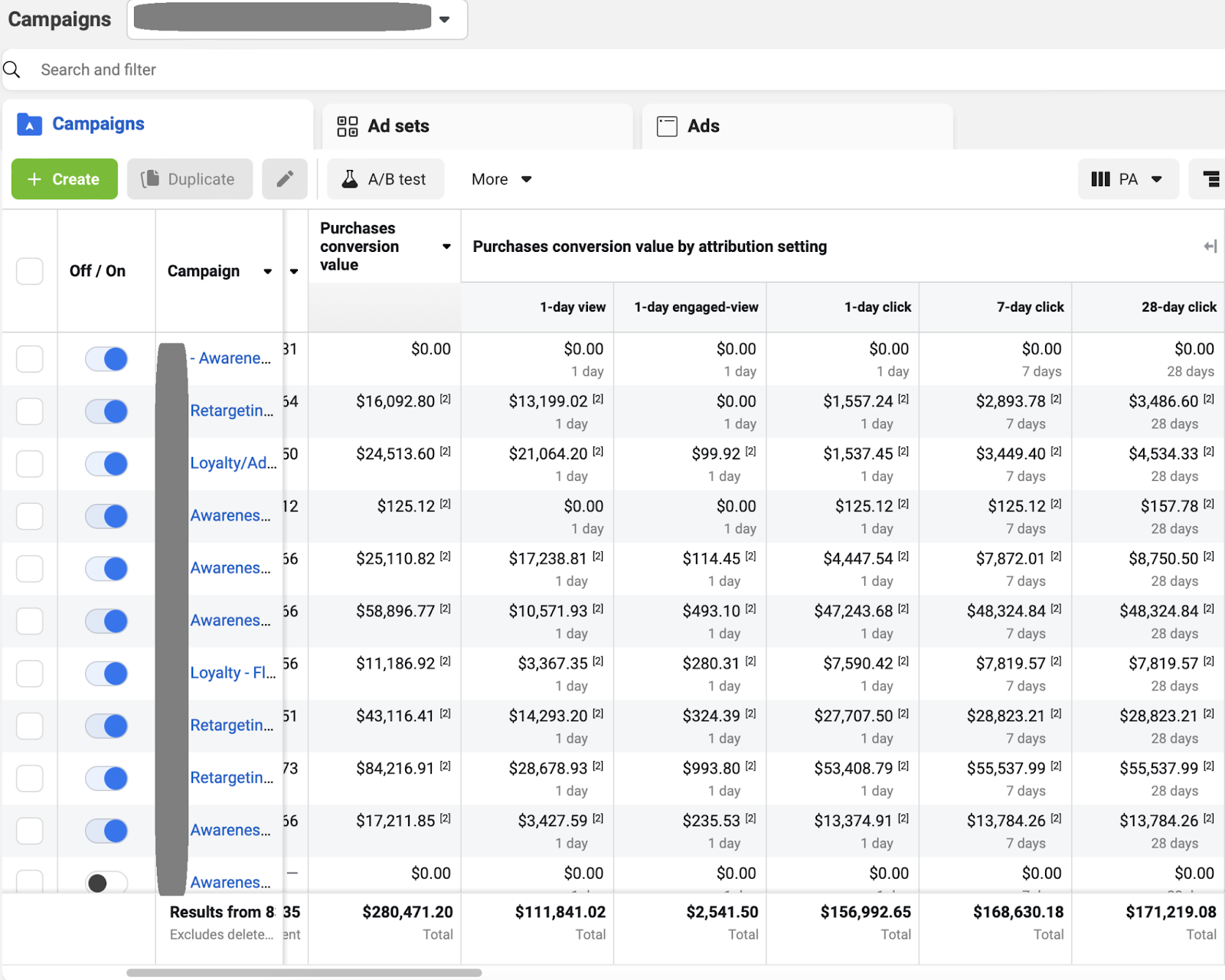
Attribution doesn’t solely impact reporting; it also affects campaign performance because Meta optimizes based on the chosen attribution setting. For example, if your campaigns are set at 7-day-click, Meta will seek users most likely to convert within 7 days after clicking on the website.
Which setting is the right one?
This is subjective and depends on factors such as the nature of the business, campaign type, budget, and the chosen source of truth for measuring success. Many advertisers advocate for removing view-through because it can inflate numbers when compared with other data sources like Google Analytics 4.
Additionally, Meta's certainty that the user is actually paying attention to the ad is questionable, particularly for video ads. The type of product offered also influences the choice of attribution setting. For instance, if offering a free sample product, 7-day-click may yield inflated numbers, and users who repeatedly visit the website within 7 days may need to be excluded.
The length of the customer journey also plays a role; for example, for products like furniture, which typically require a longer consideration period, 7 days may be preferable.
Budget-wise, it’s generally recommended to aim for 50 conversions within the last 7 days to ensure optimal learning for Meta. If this threshold isn’t met, Meta will optimize based on clicks, reducing potential revenue. If your weekly budget is lower than 50 times your average cost-per-acquisition, adding view-through may be beneficial to provide Meta with more data for optimal learning.
Data Sources vs. Attribution
Now, let’s address the source of truth, which often poses challenges for advertisers. Discrepancies between revenue reported in Meta’s Ads Manager and actual revenue in bank accounts are common. How does this relate to attribution settings?
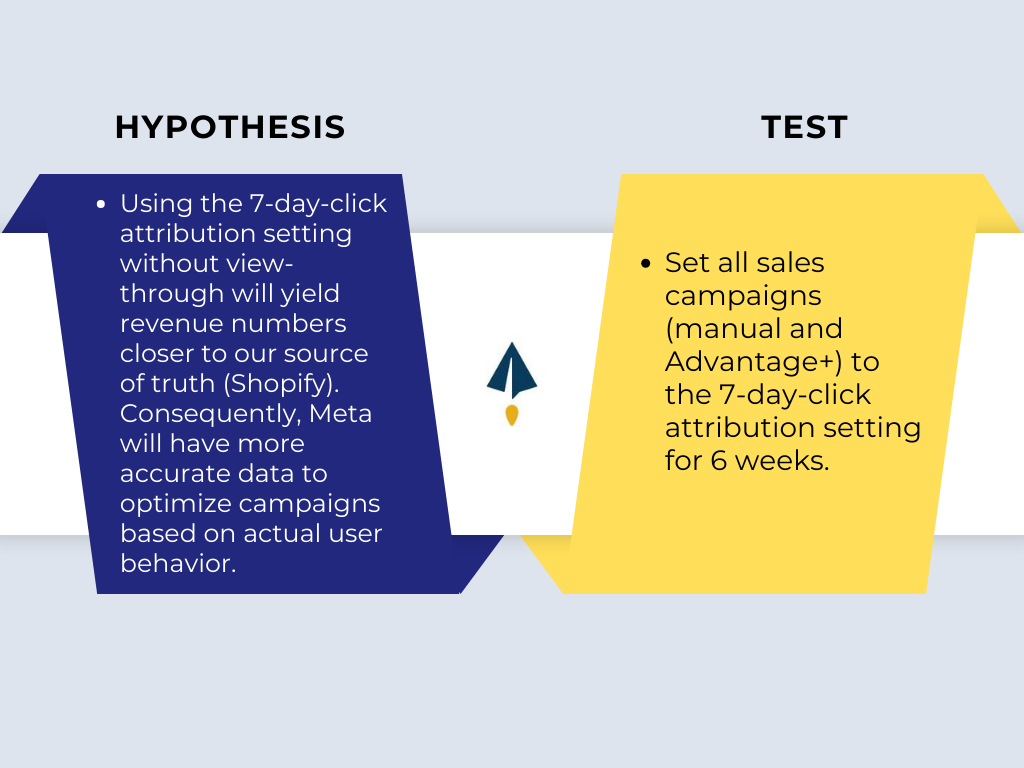
Results and Findings
- Discrepancy between Shopify and Meta reduced by -53%. Revenue reported from Shopify was closer to the numbers in-platform.
- In-platform ROAS dropped by -74% in the 7-day-click + 1-day-view report. Considering Shopify numbers, ROAS dropped by -45%.
- Earned Revenue Share (ERS) increased by +8.24%.
- Marketing Efficiency Ratio (MER) dropped from 9.32 to 5.43.
| While the hypothesis proved to be correct and optimizing for 7-day-click narrowed the gap between platform numbers and other data sources, it also limited the data Meta relies on to identify converting users. |
Removing view-through primarily impacted prospecting audiences and orders from new customers, suggesting that Meta relies on this attribution to target new users. Changes in ERS and MER indicate that using 7-day-click alone is more expensive than also relying on view-through data, particularly for small to medium budgets.
Where to change the Attribution setting in Facebook Ads?
When you create a new ad set, just below the ad set name, you will have the option to choose your conversion location. When you select Website, you will be shown a clickable "Show more options" on the bottom, like here:
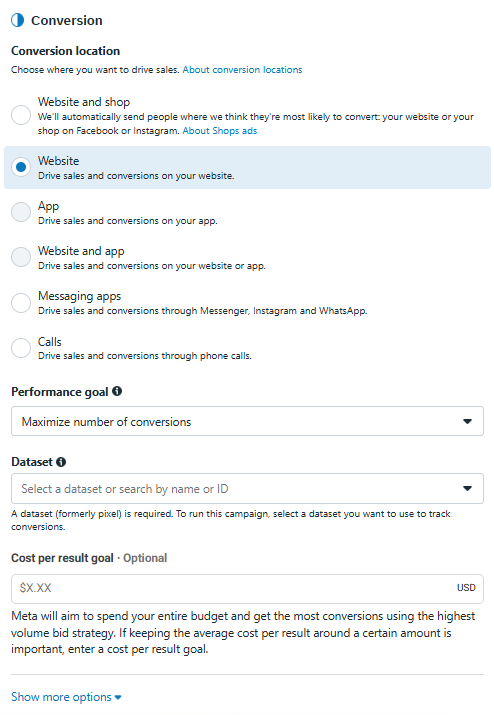
Once you click the "Show more options", you will get an expanded window like here:
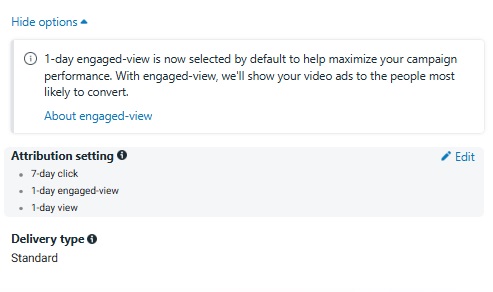
Then, if you click the little pencil icon "Edit" next to "Attribution setting" you will have the option to change your attribution settings as you wish.
Conclusion
Switching to a new attribution setting restarts the learning process for the entire account. Therefore, it’s advisable to implement changes gradually, per campaign, and analyze their impact. Migrating to a new attribution setting requires time, budget, and patience for Meta to gather enough data to optimize based on users who convert within 7 days.
All data sources have blind spots, making it challenging to follow the customer journey accurately. Despite potentially inflated numbers, Meta's data provides insights into conversion drivers and the customer journey. It’s best to rely on multiple data sources to understand the touchpoints and attribution of each channel.
Ready to test your knowledge? Enjoy this 3-minute quiz!
